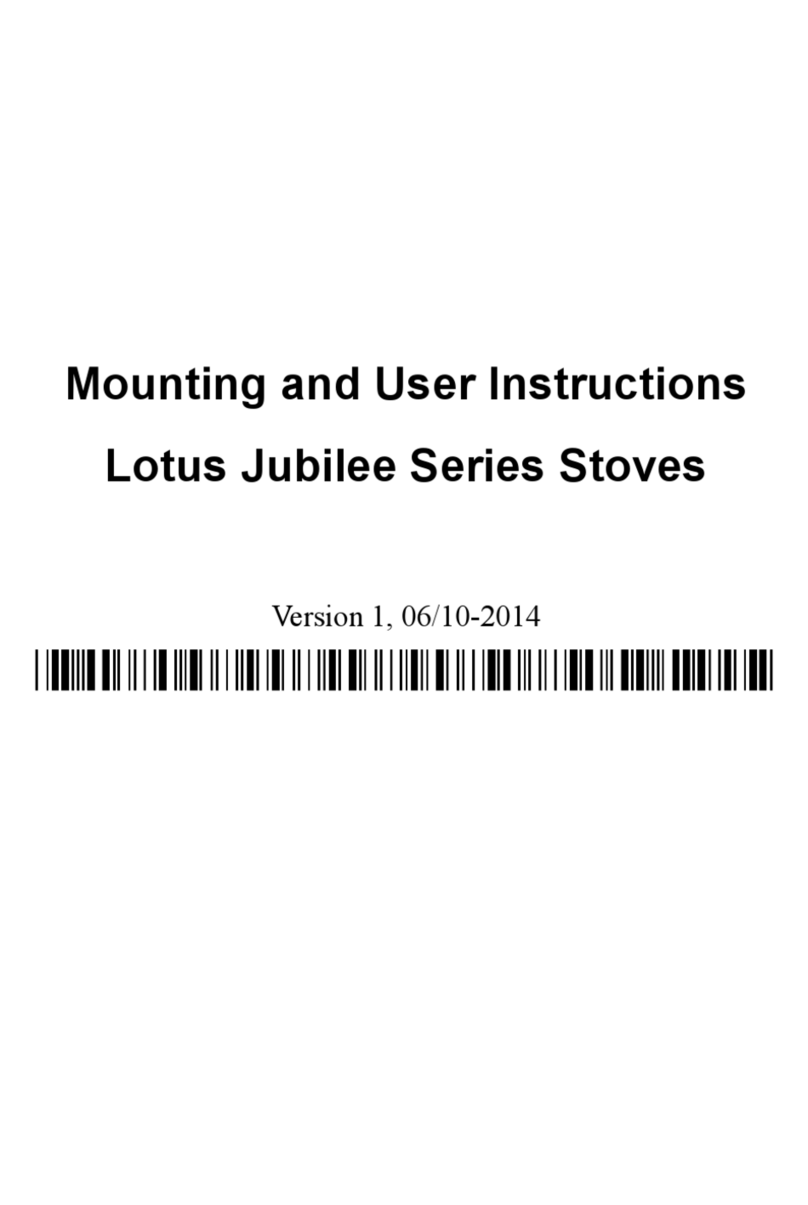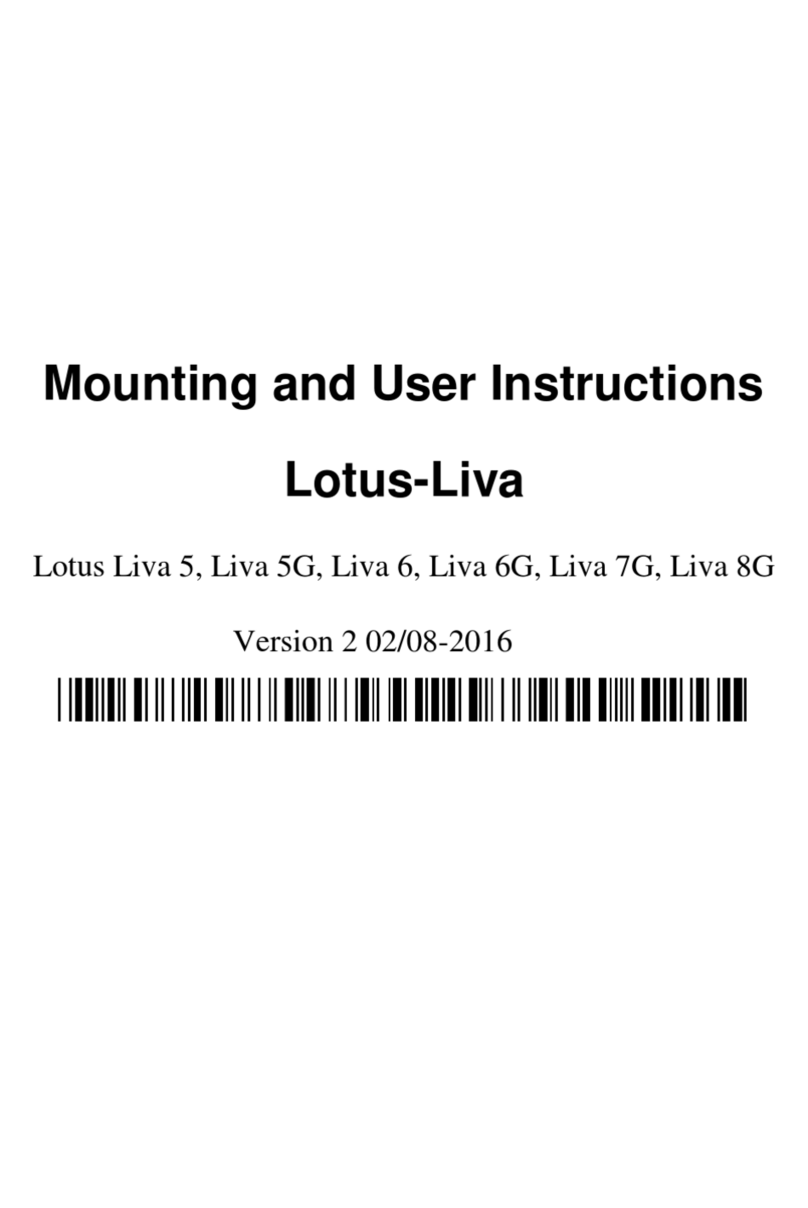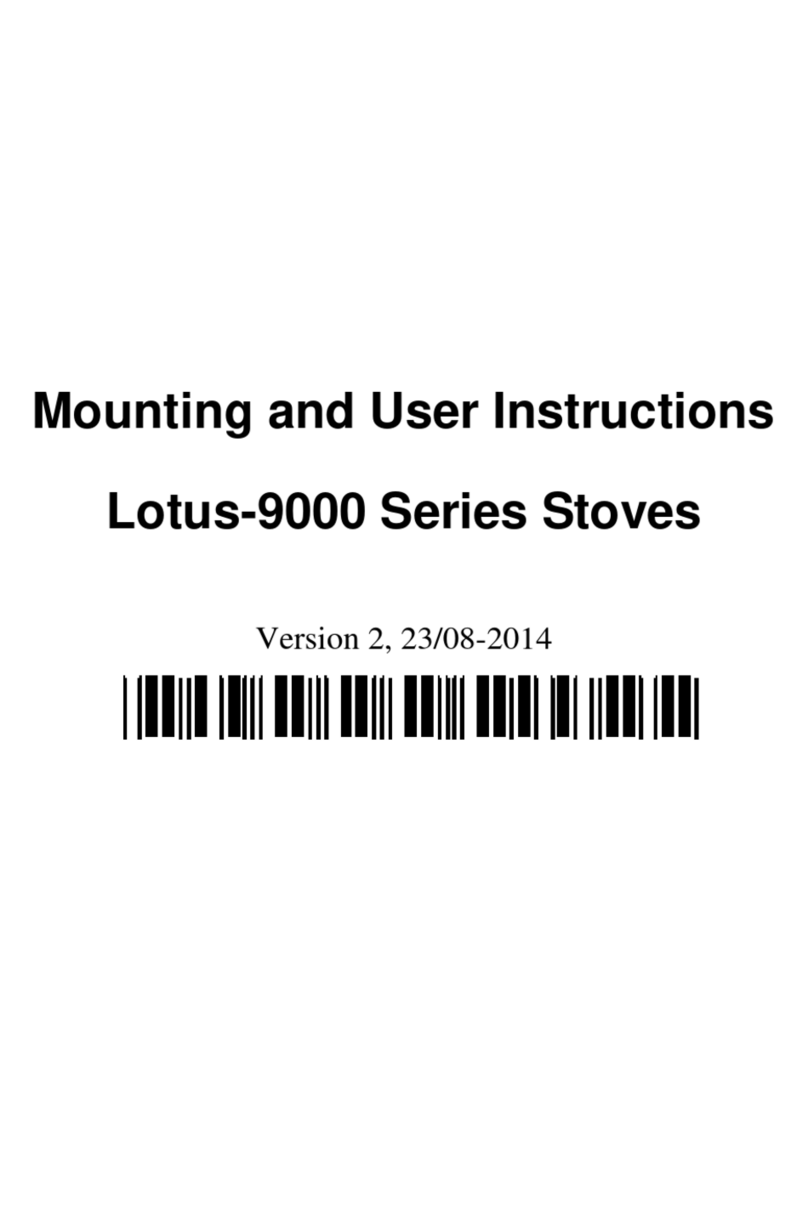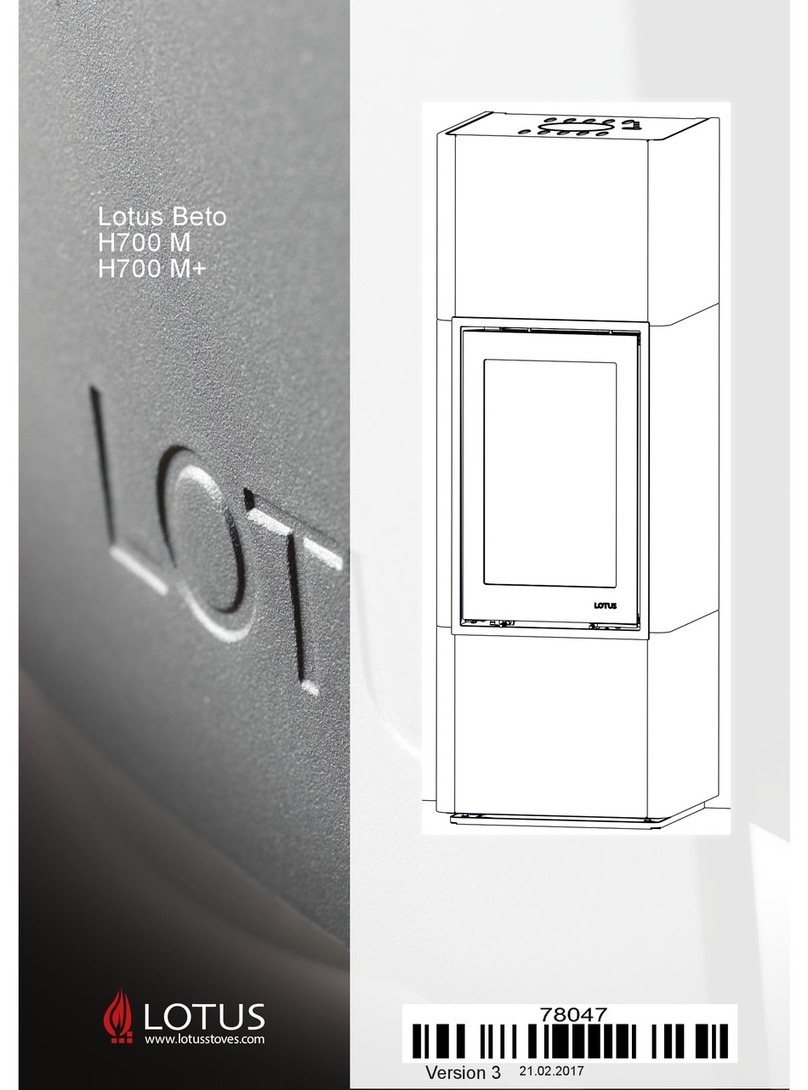
2
Contents
Introduction ............................................................................................................... 4
1 Stove installation..................................................................................................... 4
1.1 Floor loading .....................................................................................................................4
1.1.2 Floor conditions......................................................................................................................................... 5
1.2 Safety clearances to combustible materials ............................................................................6
1.3 Safety information .............................................................................................................7
1.3.1 Installation instructions ......................................................................................................................... 7
1.4 Combustion air supply ........................................................................................................8
1.5 Chimney dimensioning........................................................................................................8
2 Lotus stoves are suitable for intermittent burning .................................................. 9
3 Technical data ......................................................................................................... 9
4 Safety clearances .................................................................................................... 9
5 The appliance must not be modified! ....................................................................... 9
6 Fuel ......................................................................................................................... 9
6.1 Lighting the stove for the first time.......................................................................................9
6.2 Fuel .................................................................................................................................9
6.2.1 Kindling ........................................................................................................................................................ 9
6.2.2 Wood ............................................................................................................................................................. 9
6.2.3 Wood storage........................................................................................................................................... 10
7 Stove operation ..................................................................................................... 10
7.1 Lighting and refuelling ...................................................................................................... 10
7.2 Ash ................................................................................................................................ 11
8 Useful tips ............................................................................................................. 11
8.1 Stove cleaning................................................................................................................. 11
8.2 Maintaining the stove ....................................................................................................... 11
8.3 Firebox linings ................................................................................................................. 12
8.4 Glass panel ..................................................................................................................... 12
8.5 Stock/Spare parts ............................................................................................................ 12
9 Natural stone......................................................................................................... 12
10 Troubleshooting .................................................................................................. 13
11 What the stove includes ...................................................................................... 14
12 Technical data ..................................................................................................... 15
2000 Series Technical data ...................................................................................... 15
Beto 470 Technical data. .......................................................................................... 16
Beto 470W Technical data. ....................................................................................... 17
Beto 700 Technical data ........................................................................................... 18
Jubilee 10-15 Technical Data.................................................................................... 19
Jubilee 25 Series Technical Data .............................................................................. 19
Jubilee 35 Series Technical Data .............................................................................. 21
Liva Series Technical Data ........................................................................................ 22
Living Technical Data ............................................................................................... 23
Maestro 1-2 Technical Data ........................................... ..........................................24
Maestro Series Technical Data.................................................................................. 25
Maestro 2-152 EN 15250 Technical Data .................................................................. 26

































